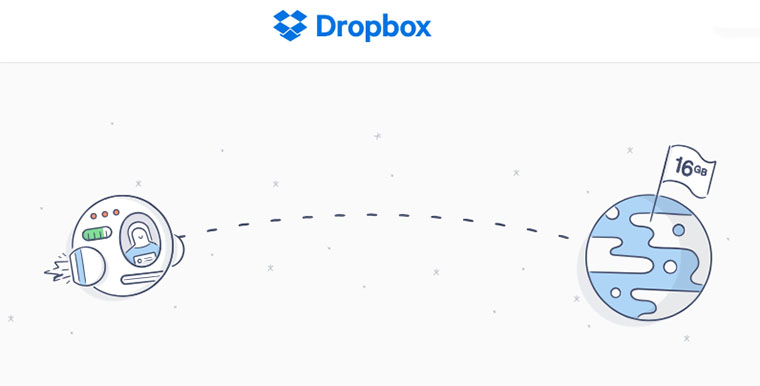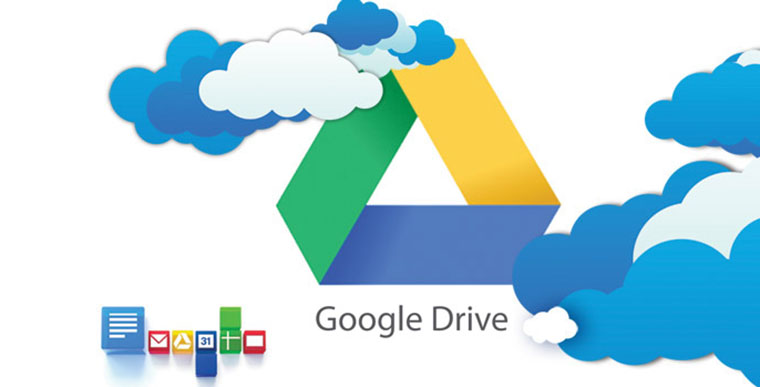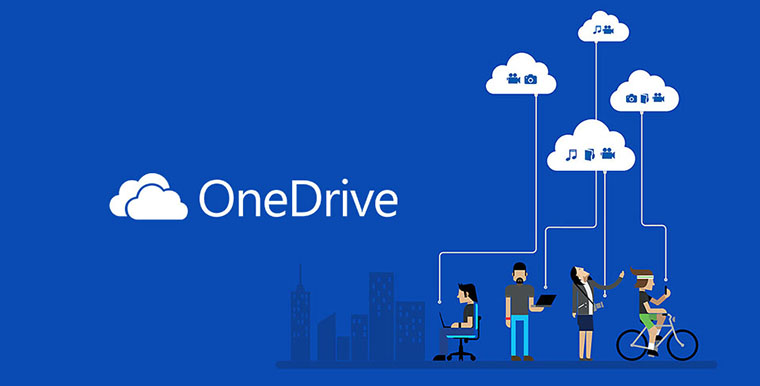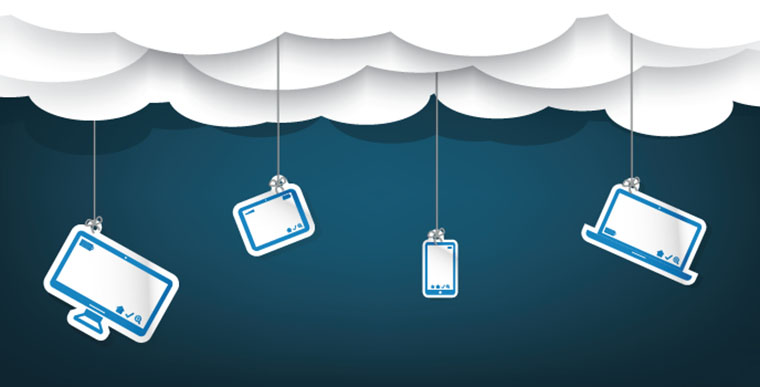How to get free gigabytes in cloud storage
All owners of Apple technology receive 5 GB in their "native" iCloud cloud service. Due to various restrictions, using this cloud is not always convenient, and the allocated space quickly runs out, and iCloud does not get along well with other people's systems.
Additional iCloud storage pricing:
50 GB: 59 rub.
200 GB: 149 rub.
1 TB: 599 rub.
2 TB: 1 490 rub.
For convenient data exchange between different platforms, gadgets and users, it is better to connect to a third-party service. The choice of clouds today is very extensive, there are both old-timers of the market and daring newcomers, corporate players and small companies.
The conditions and tariffs for each service change quite often, we offer the most up-to-date information as of the moment.
dropbox

One of the most popular services is not very willing to distribute space in the cloud. When the company maintained and developed the Carousel and Mailbox applications, you could get several gigabytes of disk space for connecting programs to your account and uploading data.
Another 3 GB was given during testing of the automatic data upload function in the application.
Dropbox also had prize gigabytes when buying Android smartphones. However, they were issued for a year or two.
Now it doesn’t smell of such generosity, you will have to invite friends to get an extra place. Finding someone who hasn't signed up for Dropbox yet is a quest. There are schemes with the creation of fake accounts and changing the MAC address of the network card, but sooner or later fake friends are revealed, and the place in the cloud is taken away.
Prices for additional space in Dropbox:
1 TB: $9.99 ($8.25 if billed annually)
2 TB: $15 ($12.50)
Unlimited space: $25 ($20)
2 at registration + up to 16 GB (500 MB per friend).
Outcome: the most common cloud service is not as generous as it was a few years ago. You can expand the space only with the help of real friends who do not yet have an account.
Google Drive

Google initially provides 15 GB in the cloud (versus 2 GB for Dropbox), this will be enough for most users. In terms of popularity and prevalence, the services are almost equal, although initially the advantage was on the side of the "blue box".
Most cloud sync-enabled applications today work with both services.
If 15 GB is not enough, you can expand the space up to 1 TB! It is not difficult to do this, we are even ready. From my own experience, I can say that in a week or two you can contribute to the development of a cartographic service and get a bonus place.
Unfortunately, the space will have to be vacated in two years.
Sometimes Google holds one-time promotions that coincide with holidays or memorable events. Referral program is not provided.
Prices for additional space in Google Drive:
100 GB: 139 rub.
1 TB: 699 rub.
10 TB: RUB 6,990
20 TB: RUB 13,920
30 TB: 20 990 rub.
How many GB you can get for free: 15 at registration + 1 TB for 2 years.
Outcome: the cloud is maximally integrated with other Google services (mail, documents, photos) and the Android operating system, and upon registration they give a solid 15 GB. You can expand the place, but for a limited time.
Cloud Mail.Ru

A few years ago, the service literally blew up the cloud storage market, distributing 1 TB to users for a promotion. With all the shortcomings of the Mail.ru cloud (low data transfer rate and lack of WebDAV), many people now use this place to store a family photo archive or music collection.
There were other manifestations of generosity, when they gave 25 or even 100 GB during registration. Now new users are provided with only 8 GB in the cloud for free. More space is available only on a paid basis.
Given that mail.ru is a very popular mail service and most active Internet users have had an account for a long time, many have already received 100 GB or more for everything they need.
Prices for additional space in Mail.Ru Cloud:
64 GB: 69 rub. (57.5 rubles when paid for the year)
128 GB: 149 rub. (125 rubles)
256 GB: 229 rub. (190 rubles)
512 GB: 379 rub. (315 rubles)
1 TB: 699 rub. (582 rubles)
2 TB: 1 390 rub. (1,158 rubles)
4 TB: 2 790 rub. (2 325 rubles)
How many GB you can get for free: 8 GB upon registration.
Outcome: not the most convenient cloud with unstable speed. The Mail.ru mobile application is only getting a convenient and functional look. If you have not pumped the cloud here before, then now it makes no sense to start.
Yandex.Disk
![]()
At the moment, Yandex is the most active player in the cloud market. There are regular promotions and giveaways of bonus space to expand the initial 10 GB.
Users can receive bonuses when buying and using equipment from different brands or by connecting to Yandex partner services. You can read about all current and past promotions.
Now the next "distribution of clouds" is taking place, you can get +32 GB to the already available space. To do this, just enable automatic photo upload in the mobile application. A few minutes after activating the option, the bonus will be received and you can turn off the upload.
Prices for additional space in Yandex.Disk:
10 GB: 30 rub. (25 rubles when paying for the year)
100 GB: 80 rub. (67 rubles)
1 TB: 200 rub. (167 rubles)
How many GB you can get for free: 10 at registration + 32 GB for the promotion.
Outcome: an excellent domestic player in the cloud storage market with good speed and a convenient application. Promotions are regularly held for free pumping of your cloud.
OneDrive

Microsoft's service recently cut space for new users and dumped many old ones who didn't have time to confirm their desire to use the previous volume. So instead of 15 GB in OneDrive, only 5 GB is now available.
A serious corporate service does not deal with such nonsense as referral links and promotions with partners. You can get a bonus place only when buying devices or applications from Microsoft.
Pricing for additional OneDrive space:
50 GB: 72 rub.
1 TB: 269 rub. (224 rubles when paid for the year)
5 TB: 339 rub. (283 rubles)
How many GB you can get for free: 5 GB upon registration.
Outcome: using the OneDrive service is convenient in extremely rare cases when there is no need to synchronize data with mobile operating systems (competing solutions clearly win there), and the emphasis should be on working with Microsoft products, in particular with Office 365.
Mega

The cloud service, originally from New Zealand, offers 50 GB immediately for all new users. No restrictions and pitfalls, just take and use.
There is a convenient mobile application, encryption is at a good level, and a paid extension can be paid using the Bitcoin cryptocurrency.
Prices for additional space in Mega:
200 GB: €4.99 (€4.16 if billed annually)
500 GB: €9.99 (€8.33)
2 TB: €19.99 (€16.66)
4 TB: €29.99 (€25)
How many GB you can get for free: 50 GB upon registration.
Outcome: for those who need a lot of space at once and without additional movements.
What to choose

Which cloud to choose in 2017, if you have not used anything similar before?
- If there are 10-15 other people like you nearby who did not use the clouds, choose dropbox– immediately pump your account through the referral program.
- For use in conjunction with an Android device and services from Google is perfect Google Drive. 15 GB out of the box is not given everywhere.
- To quickly share photos to Moi [email protected] or Odnoklassniki, connect to Mail.Ru cloud.
- If you need a good high-speed cloud for the future - your choice Yandex.Disk. You will immediately receive 10 GB + 32 GB for the promotion.
- For Microsoft fans, we recommend OneDrive exclusively.
- When you need to quickly "merge" a large amount of data into the cloud, choose Mega. 50 GB with no file size limits and good speed.
This is how the main players of the “cloud market” look now. Some have already built up a sufficient customer base and are trying to force them to switch to a paid subscription, others are only increasing the number of subscribers, and still others do not understand why they need all this.
What cloud do you use?
Do you want to know more? Cm.